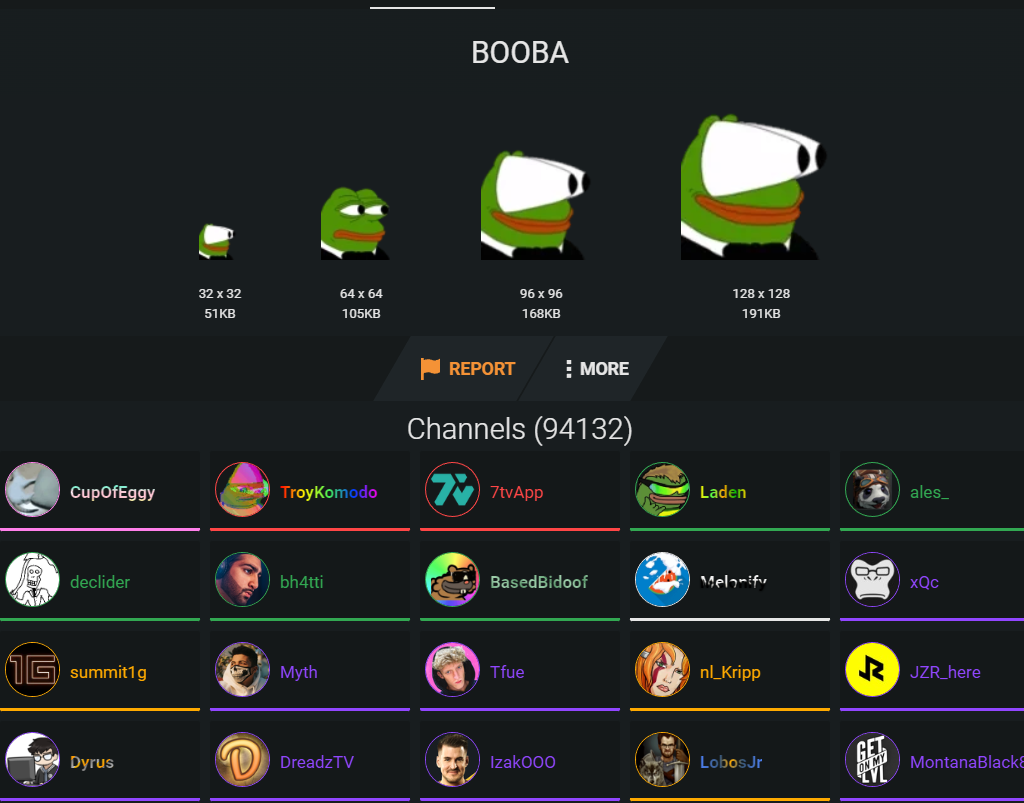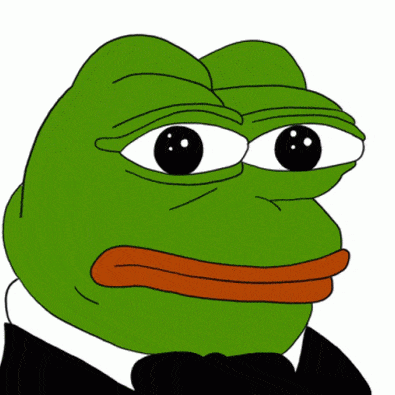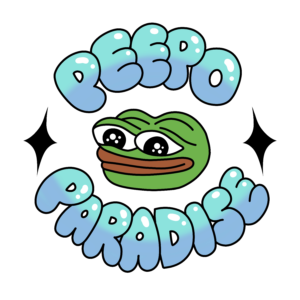Introduction
While the Booba emote has gained widespread popularity on Twitch, it’s important to understand its origins and the specific way it’s used in the community.
The word “Booba” is essentially a misspelling of the word “boobs,” and its use as a Twitch emote can be traced back to online communities like 4chan. While the origins of the word may be somewhat controversial, its use as an emote on Twitch is generally considered harmless and is simply meant to add a bit of fun and humor to chat conversations.
So how exactly is the Booba emote used on Twitch? According to its definition on the BetterTTV emote library, Booba is used to represent “boobs” or something “sexy” happening on stream. It’s often used in reaction to female streamers or other content that is considered sexually suggestive.
Additionally, the use of Booba as slang to describe a woman as “hot” or “sexy” has become fairly common in Twitch chat and other online communities. While some may find this type of language objectionable or offensive, it’s important to remember that the use of slang terms is often a matter of cultural and generational differences.
Despite its origins and potential for controversy, the Booba emote has become a beloved and frequently used part of Twitch culture. Whether used to add a bit of humor to a chat conversation or to express appreciation for a particularly “sexy” moment on stream, the Booba emote is just one example of the many ways that Twitch users can express themselves and connect with others on the platform.
The purpose of this blog post is to provide a comprehensive look at the story behind the creation and popularity of the Booba emote, as well as its impact on Twitch culture. Whether you’re a dedicated Twitch user, a casual observer, or simply curious about the history of this popular emote, this post will give you a deeper understanding of the Booba phenomenon.
The Creation of the Booba Emote
The Booba emote has a relatively recent origin story, dating back to September of 2020. As the story goes, someone posted the “Awooga! Pepe” meme on an image of actress Elizabeth Olsen, with the misspelled word “booba” instead of “boobs.” The image quickly gained traction online, and users began to refer to it as the “Booba” meme.
From there, it didn’t take long for the Booba meme to be turned into an emote on Twitch. The first Booba emote was added to the BetterTTV (BTTV) emote library in October of 2020, and it quickly gained popularity among users. Since then, the Booba emote has been added to a number of other emote extensions, including 7TV, and has become one of the most widely used and recognized emotes on the platform. While the origins of the Booba emote may be somewhat controversial or objectionable to some, there’s no denying its impact on Twitch culture and the way that users interact with one another on the platform.
The Booba emote is a simple image of a frog with wide eyes and a goofy expression. The design is intentionally simple, which makes it easy to recognize even when it’s displayed in a small size on Twitch. The meaning behind the emote is somewhat vague, but it’s often used to convey a sense of excitement, and signs of being attracted to something.
The Booba emote started to gain popularity on Twitch shortly after it was created. Other Twitch users began to request the emote for their own channels, and it quickly spread throughout the platform.
Booba’s Popularity on Twitch
The Booba emote’s popularity quickly spread beyond channels, and it soon became one of the most widely used emotes on Twitch. It’s used by streamers and viewers alike to express a range of emotions, particularly excitement, and finding something sexy or suggestive.
Booba’s popularity is also a reflection of Twitch culture as a whole. Twitch users have a shared set of cultural references and in-jokes, and the Booba emote has become one of these touchstones. By using the Booba emote, Twitch users can communicate not just the emotion they’re feeling, but also their connection to Twitch culture.
The popularity of Booba on Twitch has also led to the creation of fan art, and many more memes about this frog, including COCKA. Fans of the character have embraced Booba’s goofy personality and have created their own interpretations of the character. This fan engagement has helped to reinforce Booba’s status as a cultural icon on Twitch.
Booba’s popularity has had a significant impact on Twitch culture. The emote has become a shorthand for excitement and silliness, and it’s often used in the chats of female streamers who are presenting something revealing. Booba has also inspired other emotes and memes on the platform, which in turn have helped to reinforce Twitch culture and community.
Impact of the Booba Emote on Twitch Culture
The Booba emote’s popularity has led to the creation of many other emotes and memes on Twitch. These emotes and memes often use the same simple, cartoony style as the original Booba emote, and they often reference Twitch culture and in-jokes.
Due to the popularity and quick trending of the emote, twitch streamers who use the Booba emote frequently may see a boost in their popularity and engagement, which could lead to more opportunities for partnerships and sponsorships.
The Booba emote has sparked controversy over its usage as a tool to objectify and sexualize women. Critics argue that the emote promotes the objectification of women’s bodies, perpetuating harmful attitudes and behaviors towards women. The sexualized nature of the emote and its association with objectification has led some users to feel uncomfortable or unwelcome on the platform.
The issue has led to discussions about the role of Twitch and its community in promoting respectful behavior and combating sexism and misogyny. Some users have called for stricter enforcement of community guidelines, while others have advocated for greater education and awareness around issues of sexism and harassment. Ultimately, the controversy surrounding the Booba emote highlights the need for continued efforts to create a safe and inclusive environment on Twitch for all users.
Conclusion
The Booba emote on Twitch has become a popular and recognizable feature of the platform, with many users incorporating it into their streams and chat conversations. Its playful and lighthearted nature has made it a favorite among fans, with some even creating spin-off emotes such as Cocka and Hipsa. The emote has also become a part of the wider Twitch culture, with users incorporating it into memes and other forms of content.
However, despite its popularity, the Booba emote has also sparked controversy and criticism due to its objectifying nature and association with harmful attitudes towards women. Critics argue that the emote promotes the objectification of women’s bodies, perpetuating harmful attitudes and behaviors towards women. The sexualized nature of the emote and its association with objectification has led some users to feel uncomfortable or unwelcome on the platform.
Despite the controversy, it is worth noting that the Booba emote and its spin-offs have been used in positive and creative ways by many members of the Twitch community. Some have used it to express support and encouragement for fellow streamers, while others have incorporated it into their own unique styles of content. Ultimately, the emote’s popularity is a testament to the creativity and ingenuity of the Twitch community, and its continued use demonstrates the platform’s ability to evolve and adapt to the ever-changing landscape of online culture.
In conclusion, while the Booba emote has sparked controversy and criticism over its objectifying nature, it remains a popular and recognizable part of the Twitch community. By continuing to promote education, awareness, and respect on the platform, the Twitch community can ensure that all users feel safe and welcome, while still maintaining the creativity and vibrancy that makes Twitch such a unique and engaging platform.
Using the Booba Emote on Twitch
Once you’ve learned about the history and popularity of the Booba emote, you may want to start using it yourself on Twitch. Fortunately, there are a few different ways to access the emote, depending on your preferences and the tools you have available.
One of the most popular ways to use the Booba emote on Twitch is through emote extensions such as BetterTTV (BTTV) and 7TV. These extensions allow users to access a wide variety of custom emotes, including Booba, that are not available through Twitch’s standard emote library.
To use Booba through an emote extension like BTTV, you’ll first need to install the extension in your browser. Once you’ve done so, you should be able to access the Booba emote (and many others) by typing its name into Twitch’s chat box and selecting it from the available options. It’s worth noting that while emote extensions like BTTV and 7TV are popular among many Twitch users, they may not be available or supported on all devices or platforms.
Additionally, some streamers may choose to disable custom emotes in their chat, which could impact your ability to use the Booba emote or other custom emotes. If you’re having trouble accessing the Booba emote through an emote extension or are otherwise unable to use custom emotes on Twitch, you can also try subscribing to a Twitch channel that offers the emote as part of its subscription benefits. This will give you access to the emote on that particular channel’s chat, even if you can’t use it elsewhere on the platform.
Whether you’re using an emote extension or subscribing to a channel, the ability to use custom emotes like Booba is just one of the many ways that Twitch users can express themselves and connect with others on the platform. So go ahead and add Booba to your collection of favorite emotes – you never know when it might come in handy!
















nice